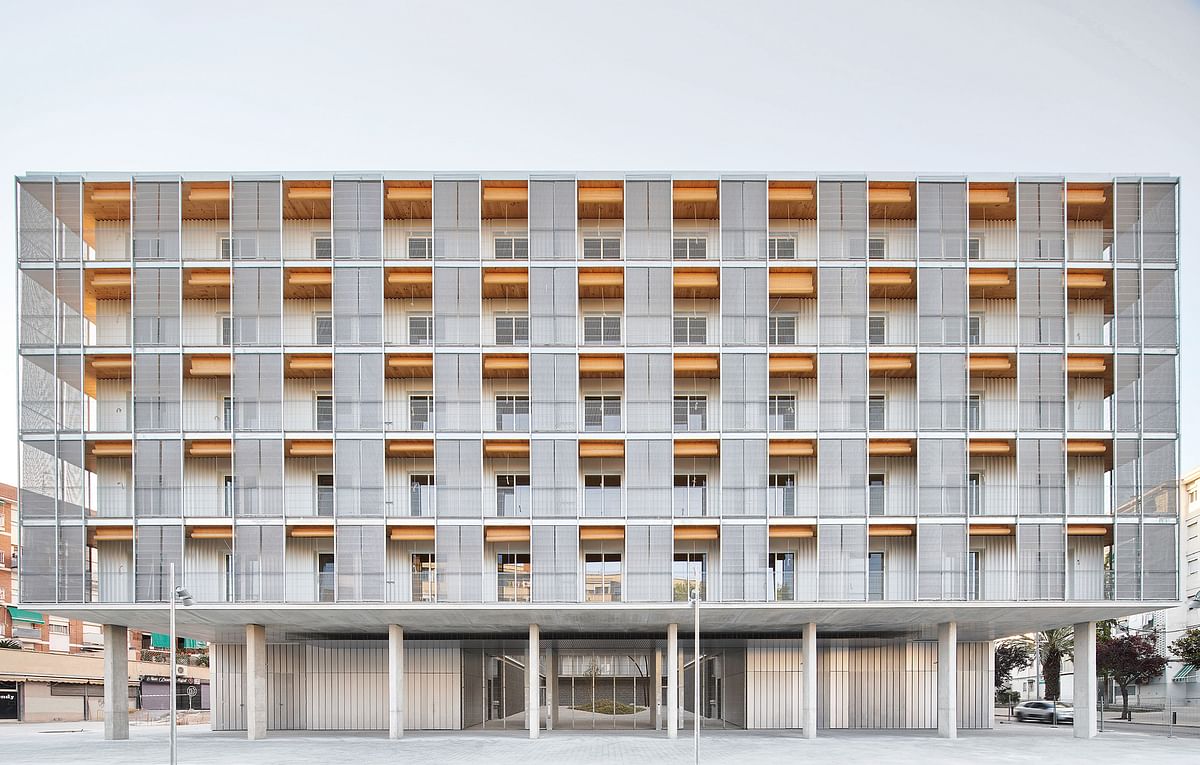These three projects will compete for the fourth edition of the RIBA International Prize
By Josh Niland|
Wednesday, Nov 6, 2024

Related
Three finalists for the 2024 RIBA International Prize have emerged in the competition to be crowned as the next title-holder of the "world’s most transformative building."
The fourth edition of the prize, which was first established in 2015, includes a juried selection taken from the slate of 22 winners of the RIBA International Awards for Excellence that was announced in June. The Grand Jury was comprised of Tosin Oshinowo, MoMA senior curator Paola Antonelli, and Lu Wenyu of Amateur Architecture Studio.
RIBA President Muyiwa Oki states: "The conservation of the planet’s resources and the provision of the best housing in which people can grow and thrive remain two of the central concerns of architects around the world. From a timber-framed social housing building with an inventive use of space, to two projects focused on the repair, restoration and transformation of buildings to create new and useful space to work or participate in culture, these three inspiring projects demonstrate the ability of architecture to meet shared, global challenges head on."
Details of the three select finalists are as follows. The overall winner is expected to be announced on Wednesday, November 27th, from RIBA’s headquarters in London.
Jacoby Studios, Germany, by David Chipperfield Architects



RIBA Citation: "Sited in Paderborn, a medieval town in the north Rhine region of Germany, Jacoby Studios is an example of innovative and sensitive reordering of existing buildings within a historic setting to create a new headquarters for a family run business. The project results in a harmonious form, with existing stone and brick walls repaired and left exposed with new concrete and timber elements stitching together parts of the ruin to integrate the new extended form that mediates between the old and new.
The jury commented on the beautiful execution in mixing repair and restoration with disciplined new-build. By celebrating the presence of the gothic monastery with new wings, the building offers a model for sophisticated office space with a richness that is difficult to emulate in a new speculative office build."
Modulus Matrix: 85 Social Housing in Cornellà, Spain, by Peris + Toral Arquitectes

RIBA Citation: "Modulus Matrix is a ground-breaking, six-storey courtyard building of 85 flexible, socially rented homes in Barcelona using timber frame construction. Since completion, the project has fostered a strong sense of neighbourliness and pride in its resident community. Using the tatami mat module of 2.6m x 3.6m, the building is planned around a simple, central, communal courtyard, with four circulation cores in each corner, and each floor described as a 'matrix of communicating rooms.'
The jury applauded the project’s clear intentions as a commentary on space and construction. While the building is literally a combination of separate apartments, is has come togetheras one collective domestic space. The efficient use of CLT combined with clever composition create a duality that is both profoundly poetic and extremely practical."
Lianzhou Museum of Photography, China, by O-office Architects



RIBA Citation: "Lianzhou Museum of Photography was built on the site of the local sugar mill, with the purpose of revitalising the traditional downtown of Lianzhou, a remote city of northern Guangdong in South China. At the heart of the complex is a retained and refurbished warehouse, wrapped around which is a U-shaped new structure on three to five levels, the two buildings being linked by a mainly external courtyard complex which weaves around galleries and meeting places, balancing contemporary arts with local identity.
The jury praised the physical and spiritual integration of the project into the fabric and community, together with its visceral beauty. Having developed somewhat organically as the result of photography exhibitions, the publicly-funded project beautifully balances contemporary arts with local identity, marrying the past and the present within the material culture of the place."

Share
0 Comments
Comment as :